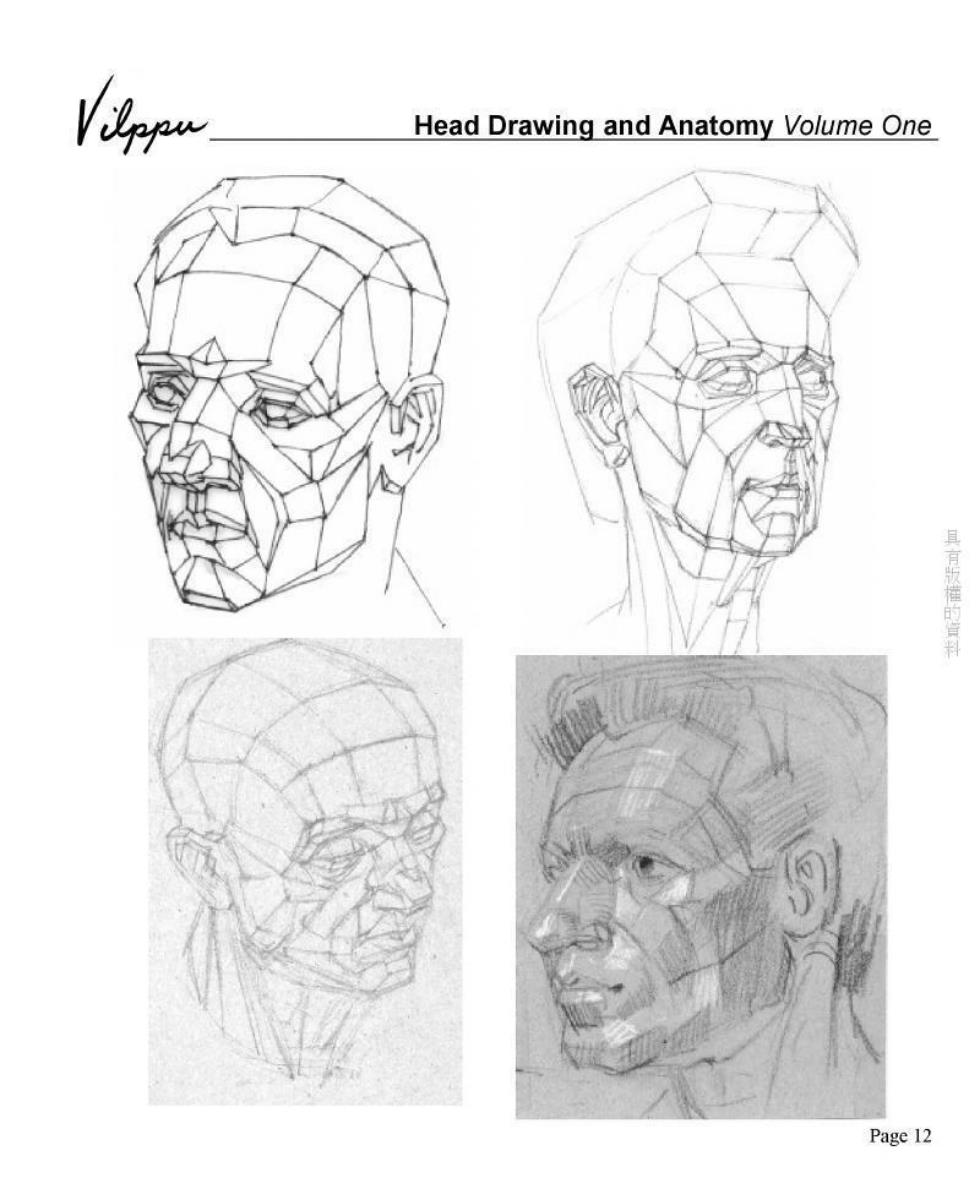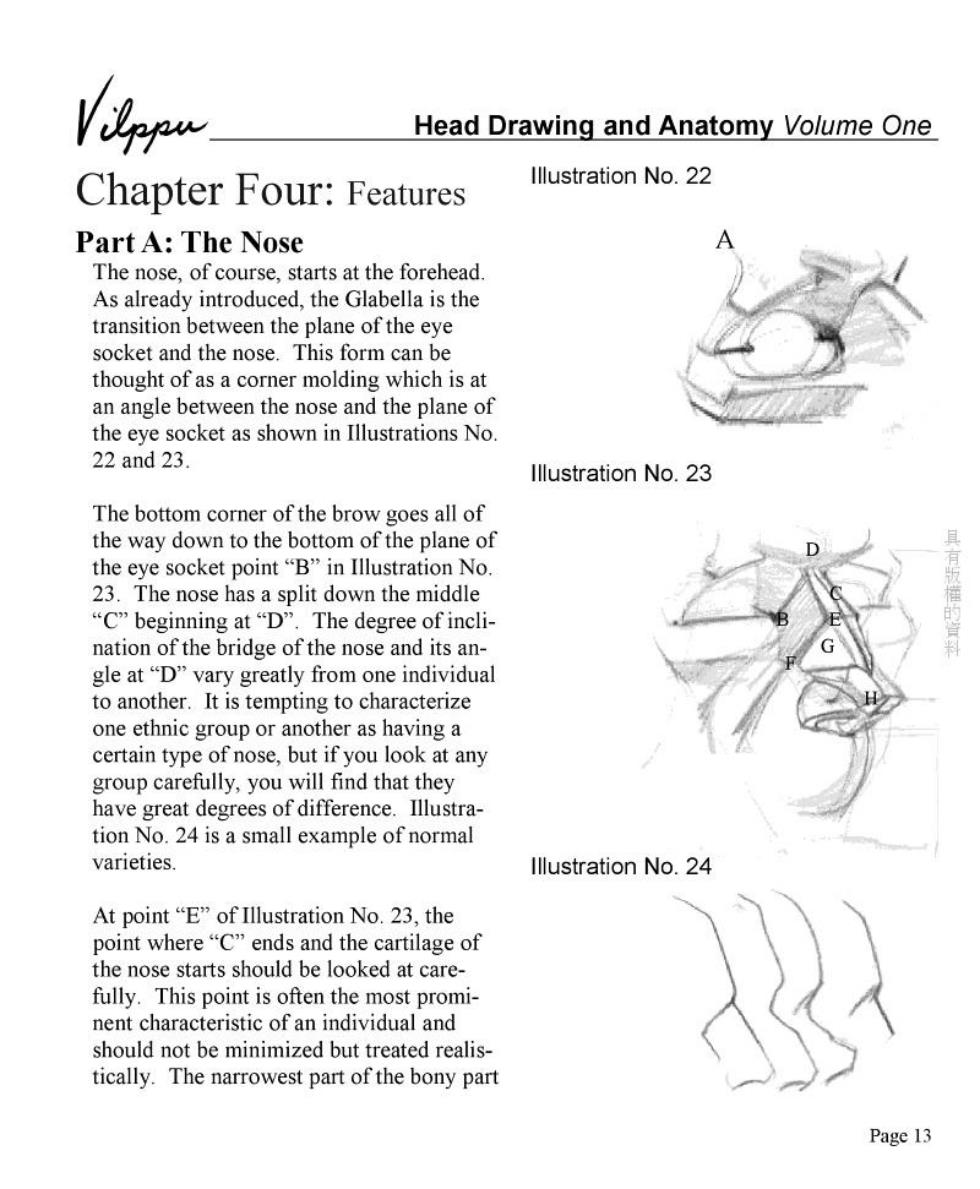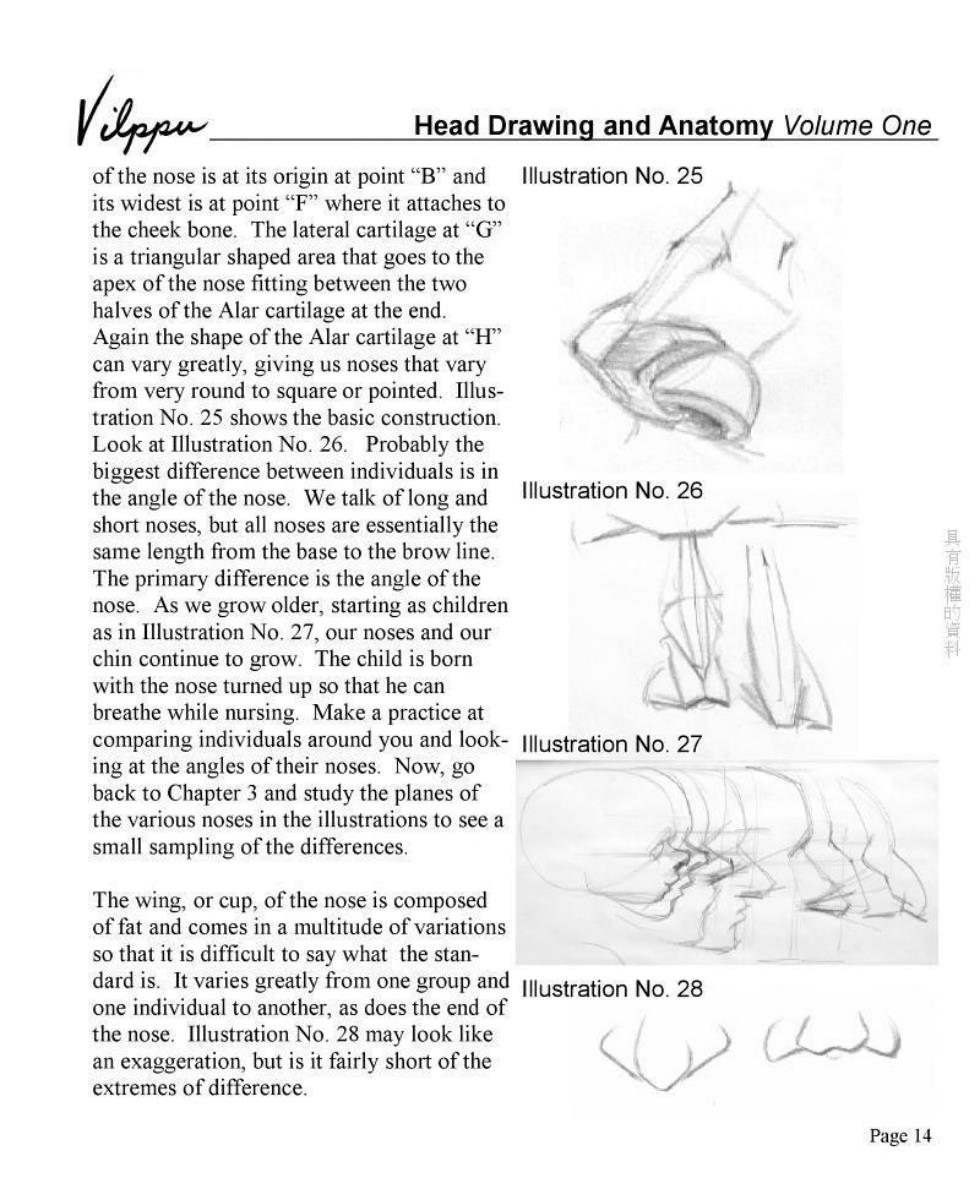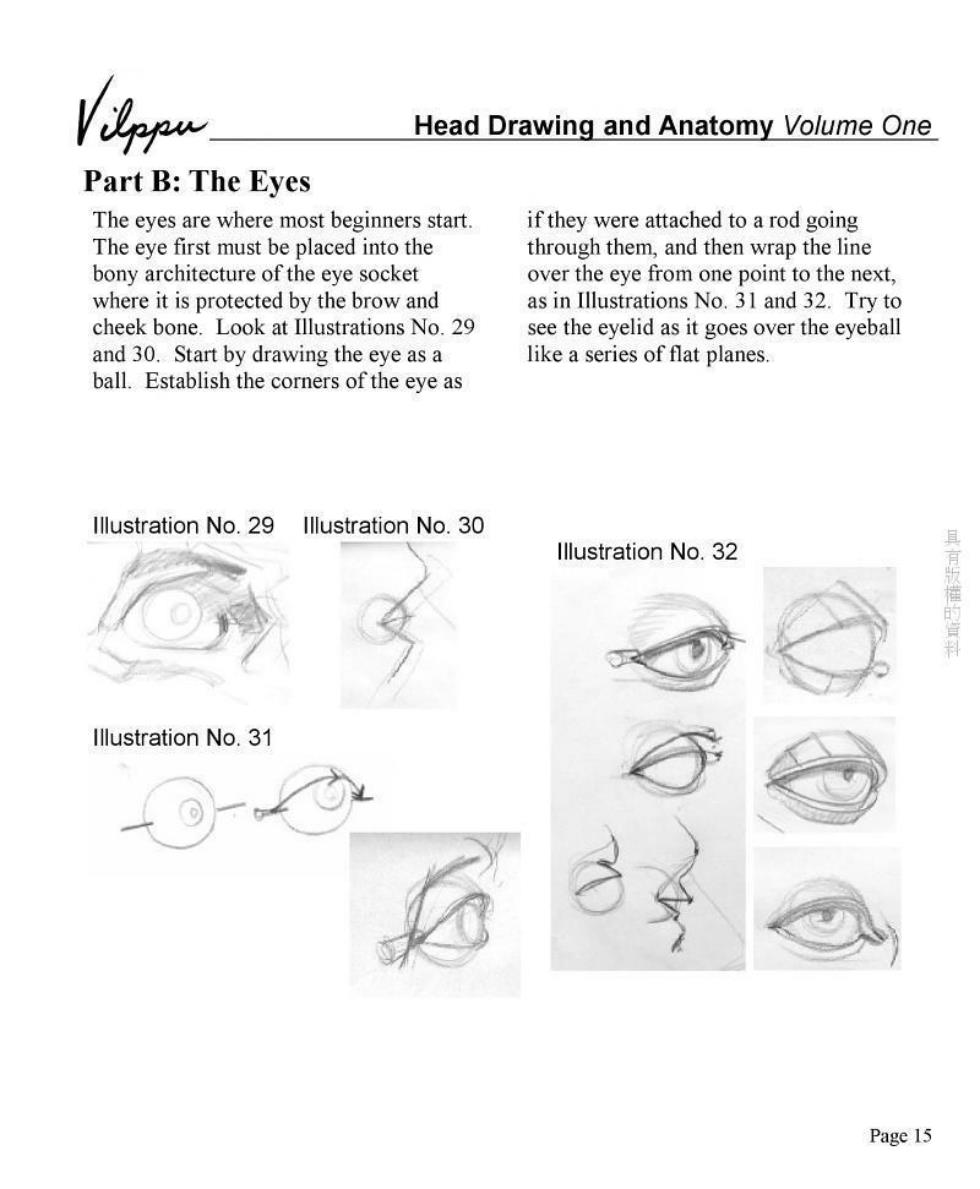
Head Drawing and Anatomy Volume One 具有版的科 Page 12

Head Drawing and Anatomy Volume One Chapter Four:Features Illustration No.22 Part A:The Nose The nose,of course,starts at the forehead As already introduced,the Glabella is the transition between the plane of the eye socket and the nose.This form can be thought of as a corner molding which is at an angle between the nose and the plane of the eye socket as shown in Illustrations No 22and23. Illustration No.23 The bottom corner of the brow goes all of the way down to the bottom of the plane of the eye socket point“B”in Illustration No. 23.The nose has a split down the middle “C"beginning at“D”.The degree of incli- nation of the bridge of the nose and its an- gle at“D”vary greatly from one individual to another.It is tempting to characterize one ethnic group or another as having a certain type of nose,but if you look at any group carefully,you will find that they have great degrees of difference.Illustra- tion No.24 is a small example of normal varieties. Illustration No.24 At point“E”of Illustration No.23,the point where“C”ends and the cartilage of the nose starts should be looked at care- fully.This point is often the most promi- nent characteristic of an individual and should not be minimized but treated realis- tically.The narrowest part of the bony part Page 13

Head Drawing and Anatomy Volume One of the nose is at its origin at point"B"and Illustration No.25 its widest is at point“F”where it attaches to the cheek bone.The lateral cartilage at"G' is a triangular shaped area that goes to the apex of the nose fitting between the two halves of the Alar cartilage at the end. Again the shape of the Alar cartilage at"H can vary greatly,giving us noses that vary from very round to square or pointed.Illus- tration No.25 shows the basic construction. Look at Illustration No.26.Probably the biggest difference between individuals is in the angle of the nose.We talk of long and Illustration No.26 short noses,but all noses are essentially the same length from the base to the brow line. The primary difference is the angle of the nose.As we grow older,starting as children as in Illustration No.27,our noses and our chin continue to grow.The child is born with the nose turned up so that he can breathe while nursing.Make a practice at comparing individuals around you and look-llustration No.27 ing at the angles of their noses.Now,go back to Chapter 3 and study the planes of the various noses in the illustrations to see a small sampling of the differences. The wing,or cup,of the nose is composed of fat and comes in a multitude of variations so that it is difficult to say what the stan- dard is.It varies greatly from one group and lustration No.28 one individual to another,as does the end of the nose.Illustration No.28 may look like an exaggeration,but is it fairly short of the extremes of difference. Page 14

Head Drawing and Anatomy Volume One Part B:The Eyes The eyes are where most beginners start. if they were attached to a rod going The eye first must be placed into the through them,and then wrap the line bony architecture of the eye socket over the eye from one point to the next. where it is protected by the brow and as in Illustrations No.31 and 32.Try to cheek bone.Look at Illustrations No.29 see the eyelid as it goes over the eyeball and 30.Start by drawing the eye as a like a series of flat planes. ball.Establish the corners of the eye as Illustration No.29 Illustration No.30 Illustration No.32 有版的 Illustration No.31 Page 15

Head Drawing and Anatomy Volume One Look at the Illustrations on the page to Illustration No.33,observe all of the get a clear idea of the use of the planes components that we have been As we place the eye into the eye studying,including how the corner of socket,we need to leave a space the eye socket connects the brow and between the corner of the eye and the the nose. nose.In the three drawings in Illustration No.33 具育版描的 Page 16